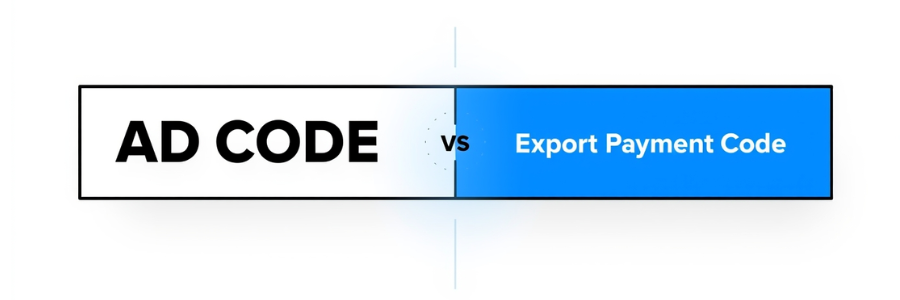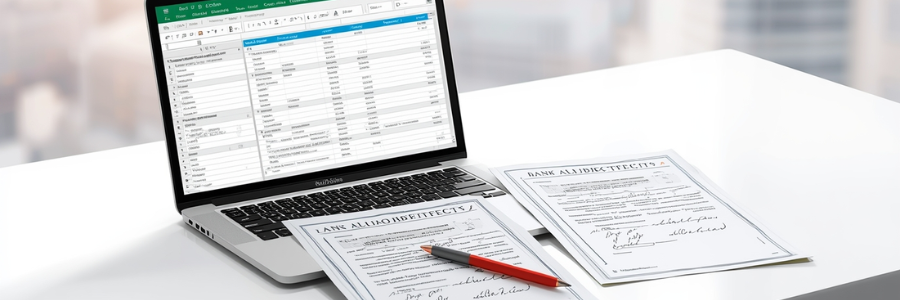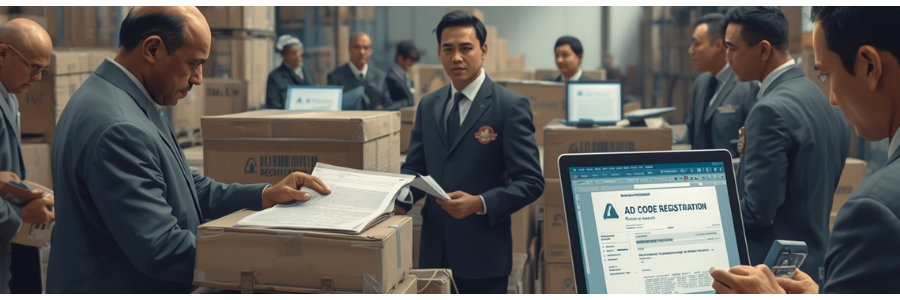Difference Between AD Code and Export Payment Code Explained
The banks are the mediators for the management of the AD code and the Export Payment code. To obtain the 14-digit authorized dealer code, the exporters and importers approach their authorized banks. Upon approval, the banks that are authorized by the RBI issue the AD code to export houses. Well, the Export Payment Code is also a part of payment transactions, but it is not used by the export businesses. But understanding the AD code registration and payment code requirements matters for the exporters. But why does it matter? To understand this topic, we will explore the difference between AD code and payment, including their use and consequences.
1. Background: The Export Ecosystem & Regulatory Framework
To make the foreign trade activities smooth and transparent, multiple regulatory bodies and laws are implemented. Among them, the top one is DGFT. In India, the Directorate General of Foreign Trade is responsible for monitoring India’s foreign trade operations. As per the requirements, it formulates and implements the Foreign Trade Policy (FTP). Furthermore, for the management of foreign trade exchange, the primary legal frameworks are implemented under the Foreign Trade (Development and Regulations) Act, 1992, and the Foreign Exchange Management Act (FEMA), 1999. In detail, the major key regulatory bodies and their functions:
A. Directorate General of Foreign Trade (DGFT)
- Role: DGFT works by collaborating with the Ministry of Commerce and Industry. In general, it serves as the chief administrator for foreign trade.
- Functions: It monitors India’s Foreign Trade Policy (FTP). Formulate and implement new rules and regulations. Acts as the licensing authority that issues licenses to export-import businesses. It also authorizes the Foreign Trade (Development and Regulations) Act, 1992.
B. Reserve Bank of India (RBI)
- Role: It is the biggest Indian central bank that manages all Indian bank branches. It is further associated with the management of foreign exchange.
- Functions: It authorizes the small banks, such as the RBI and others, to deal in foreign exchange. Monitors the flow of foreign exchange transactions. It implements the Foreign Exchange Management Act (FEMA), earlier known as FERA. It ensures that exporters and importers receive the foreign payment from the right banking channel.
C. Customs Department
- Role: The customs activities come under the Central Board of Indirect Taxes and Customs (CBIC). The customs authorities are responsible for in-person verifying goods quality and all other requirements, as well as clearing them at borders.
- Functions: It collects the duties that are imposed on imported products. It monitors all import and export activities and also ensures the Bill of Entry and Bill of Landing.
2. Understanding the Authorized Dealer (AD) Code
AD code registration is a comprehensive process where the export-import businesses register for a 14-digit authorized dealer code. The registration allows businesses to conduct international trade activities legally. The registration process, which uses the IEC (Import-Export Code), links the current bank account to the customs system and the RBI. This 14-digit code is important for customs clearance, seamless foreign transactions, government benefits, and monitoring currency inflows. The authorized dealer code is usually issued by the banks where exporters hold their current accounts.
For example, if an exporter seeking to deal in international trade markets and holding its current account at SBI (State Bank of India) visits this branch manager.
It first ensures whether this bank deals in foreign exchange or not; if yes, the bank will issue an AD code letter on its letterhead.
User Query: Role of Banks in the AD Code Registration Process
3. What is the Export Payment Code?
The “Export Payment Code” is commonly recognized as the P0102 purpose code. The code is used for categorizing inward remittances from the realization of export bills for goods. The code is used by the banks to ensure that export businesses receive the foreign currency from legal trade activities. The major parameters of the P0102 code are
- Purpose: Its purpose is to ensure the foreign currency. It determines that the exporter receives the goods payment from a legal channel and submits all records to the RBI.
- Usage: The code is mainly used when an international buyer gets their shipment and the exporter realizes the full invoice value of the goods.
- Requirement: The code is mandatory for the banks to determine the real nature of foreign exchange transactions. It also helps export businesses to align with FEMA and RBI laws.
- Significance: The P0102 code is largely used for Indian exporters who deal in foreign exchange.
4. How Many Types of Export Payment Codes?
The export payment code is used by the banks, usually by the Reserve Bank of India. The common export codes with their purpose:
|
Codes |
Purpose |
P0102: Use for the Indian exporters who receive payment after shipment.
P0103: When an export business receives payment in advance before shipment.
P0104: For those exports that are not covered by the shipping bill.
P0108: Goods that are sold under merchanting trade.
P0802: For software implementation/assistance services
P1006: Management and Business Assistance Services
5. Use of RBI Purpose Codes: Banks, Exporters, Remittance Instructions
To receive the foreign payment for export, the banks, as well as exporters, use the RBI’s purpose code in India. The code is used to determine the remittance reason during international transactions. The code is also used by the banks to ensure that the exporter has adhered to the Foreign Exchange Management Act (FEMA). In general, the code is used by the:
- Exporter: An Indian exporter uses the RBI purpose code when it receives a foreign payment. It issues the purpose code to the bank where it holds its current account.
- Authorized Banks: The banks that serve as authorized dealers play a vital role in managing the foreign exchange data. It uses the RBI’s purpose code during foreign currency transactions. Such banks are responsible for submitting all transaction records to the RBI. This transaction data is submitted through the Export Data Processing and Monitoring System (EDPMS).
- Foreign Client: The SWIFT messaging system is used by international clients or buyer banks who ask for payment purposes.
For example, if an Indian exporter is receiving the inward remittances from the foreign dealer, the code is used to describe the nature of the transactions to the bank.
6. Difference between AD Code and Purpose Code
The authorized dealer code, which comes with a 14-digit character, is used by the exporters to get customs clearance, and it also smooths foreign exchange transactions. Whereas the Export Payment Code is used by the banks to ensure the purpose of international export payments. Understand the difference through the table:
|
Features |
AD (Authorized Dealer) Code |
Export Payment Code |
|
Issuing Authority |
Banks are authorized by the RBI, which issues the AD code letter to exporters |
It is issued by the banks |
|
Function |
AD code links the export business bank account to import-export activities. |
Use internally to determine the types of export payment methods. |
|
Format |
It contains 14-digit characters. |
Contains the five alpha-numerics, starts with a P constant, and is followed by four numbers. For example, P0103 is used when exporters receive foreign payment in advance. |
|
Requirement for Customs |
It is compulsory to get the customs department approval for goods shipments at ports. |
Not directly connected to the customs process, but crucial, as it is an internal bank code for payment processing. |
|
Mandatory for Exporters |
Yes, AD code registration along with the IEC number is mandatory for Indian exporters who are associated with international trade activities. |
No, it is not mandatory for the exporters, but it is linked with the internal processing of a transaction. |
7. Sum Up | Purpose of Payment Codes: India vs. AD Code
AD code bank account registration is mandatory for the new export houses. The code is used by banks and exporters to deal in foreign exchange and to get customs clearance. Whereas the Export Payment Code is used to categorize types of export payment transactions. Both are essential codes in their own domains. In short, the AD code is used by the customs department to get bank details, whereas the purpose code is used by the banking system to ensure the transaction’s reason. By ensuring both codes, the exporters can make their foreign exchange journey smoother and more convenient. Visit the LegalRaasta.com website to get assistance for a smooth AD code registration on ICEGATE.
8. Possible FAQs for Your Doubts
a. Can one AD code be used at multiple ports?
Ans. Yes, a single authorized dealer code can be used at multiple ports. There is one registration required on the ICEGATE portal. Once it registers at a single port via the portal, it will be automatically available at all locations. The Ad Code Registration is important in speeding up your customs clearance.
b. Do digital export/service providers need an AD code?
Ans. Yes, even service exporters require an AD code to receive foreign currency legally.
c. What is P0103 vs. P0102?
Ans. The P0102 code is used for the realization of export bills for goods, whereas the P0103 code is used for determining advance receipts against export contracts.
d. How long can I use the AD code?
Ans. As long as your linked bank account remains unchanged, the AD code will be valid for a lifetime. For a single change to your bank details, you will need to re-register the authorized dealer (AD) code.
e. Can purpose code be changed after remittance is initiated?
Ans. No, the changes in the purpose code after remittance have started are not possible.









